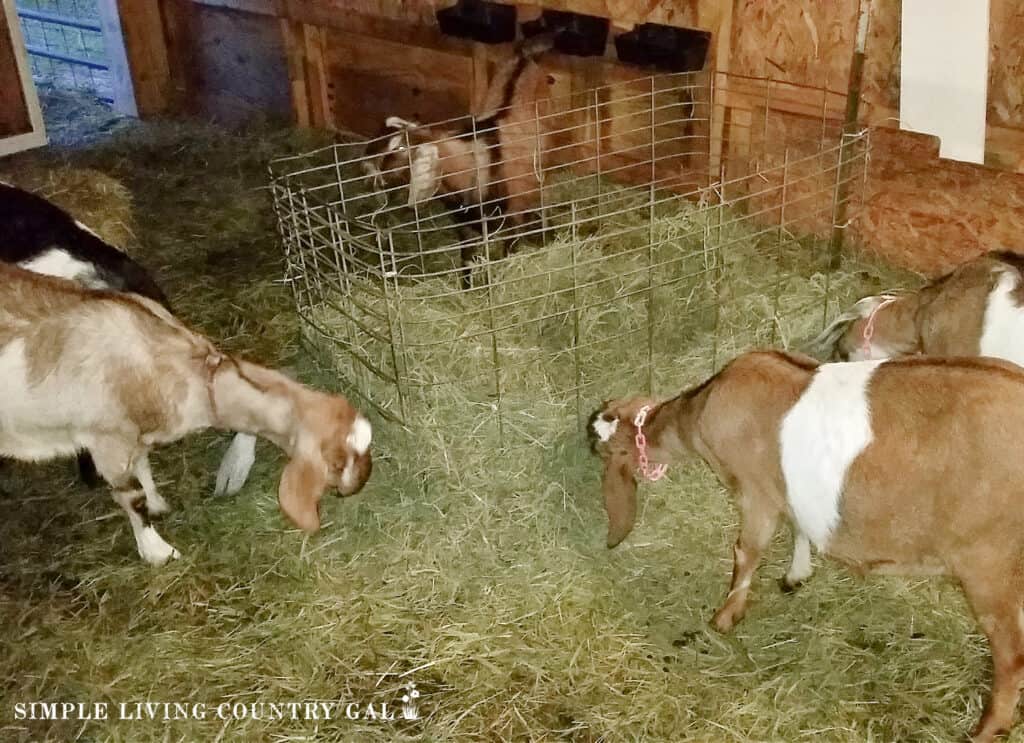diy goat hay feeder
Finding a no-waste way to feed hay to your goats is an ongoing project for most goat owners. This list of DIY goat hay feeder options will help you to try out a few options to see which ones work best for you.
How to raise dairy goats that are healthy and happy using DIY options that are affordable and work!
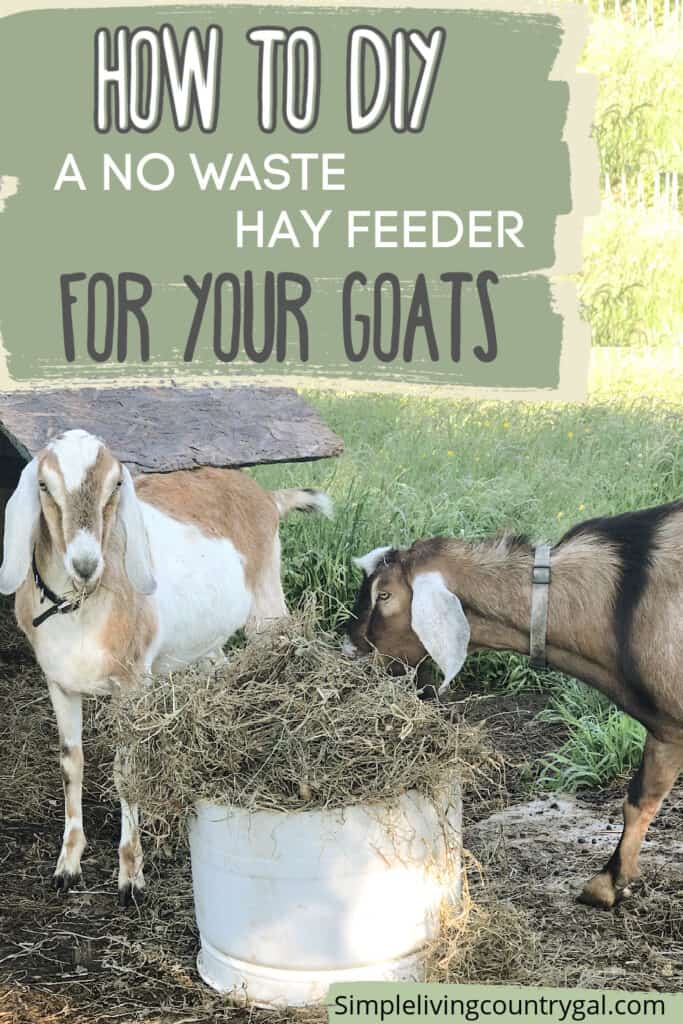
As homesteaders, we all know how important it is to take good care of our livestock. From day one the more you can encourage a healthy animal, the hardier they will be when faced with health issues.
One key factor in keeping our goats healthy and happy is feeding them the right food in the right way. However, goats can be notoriously picky eaters, wasting hay continuously as they eat. This is why it is important to have a setup that will hold the hay and cut down on waste as your goats eat it. See what hay do goats eat for the best options.
Why You Need a Hay Feeder
Hay feeders are an important part of a goat barn setup. Not only does a hay feeder help to prevent waste, but it also keeps the hay clean and off the ground where it can become soiled.
An effective hay feeder can help prevent the spread of parasites and disease by keeping the hay off the floor, which is especially important if multiple goats share a space.
How to DIY Goat hay Feeders
There are a few different options that you can create to hold hay for your goats. Most, if not all, of these options I have tried with our own goats, so the review is an accurate one of hot it worked (or didn’t) in our goat barn setup.
#1. Tote Feeder
A tote hay feeder is a quick option that you can make in just a few minutes. It is great for small spaces and can be a quick solution if you only have a few goats to feed.
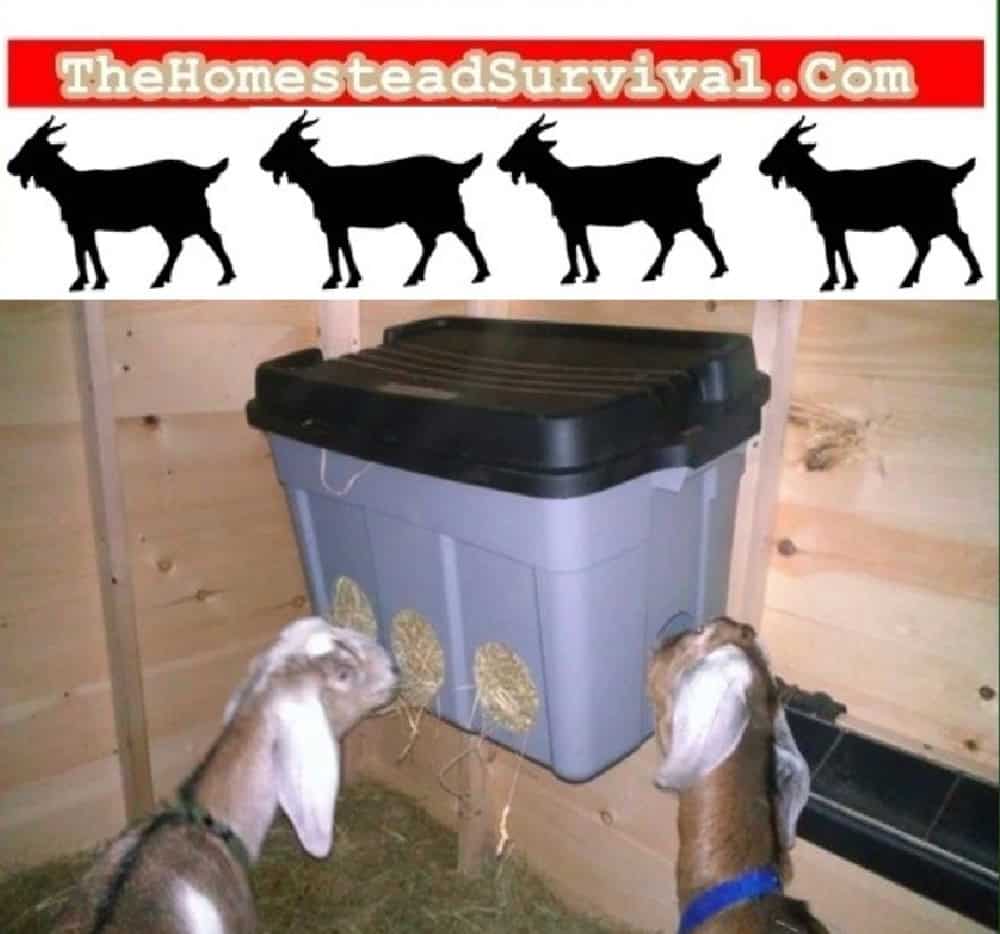
Plastic Tote Feeder Instructions:
- Choose a tote that is large enough for the goats you plan to feed.
- Be sure you have a lid that fits securley in place.
- Using a utility knife, cut 1-5 holes near the bottom of the tote.
- Hang the tote using bolts, washers, and a sheet or plank of wood to keep the tote from cracking.
- Hang at a height that allows your goats to eat while standing comfortably.
This style of feeder is good for a very small herd, young kids, or as a feeder inside of a sick or birthing pen.
Pros – This type of feeder is easy to make. Cost is minimal to free, if you have a tote on hand that will work.
Cons – This type of feeder will not hold up well to adult goats that are rough or aggressive eaters.
#2. Fence panel Feeder
This is one of our top go-to options for your barn. For this setup you will need a sheet of fencing that is rectangular in shape.
By positioning the fence panel in the corner of the barn or in a pen, it will work perfectly as a feeder. The openings are the right size for any age of goat, from young kids to bucks, and with so many openings, it works great for several goats to access at once.
This is a great way to use up scraps of sheet fencing that you may have from other projects on your homestead. Since this feeder lies flush with the floor, there is minimal waste making it our favorite type of feeder.
Fence Panel Feeder Instructions:
- Look for a piece of fence that is about 4 feet high x 3 feet wide.
- This option works best in a corner of a barn or pen.
- Use fence nails/staples to attach it to the wall on each side of the corner.
- Fill with hay.
Fence panel feeders work great for any number of goats as you can install one in each corner giving more than one option. One setup will allow several goats to eat at once.
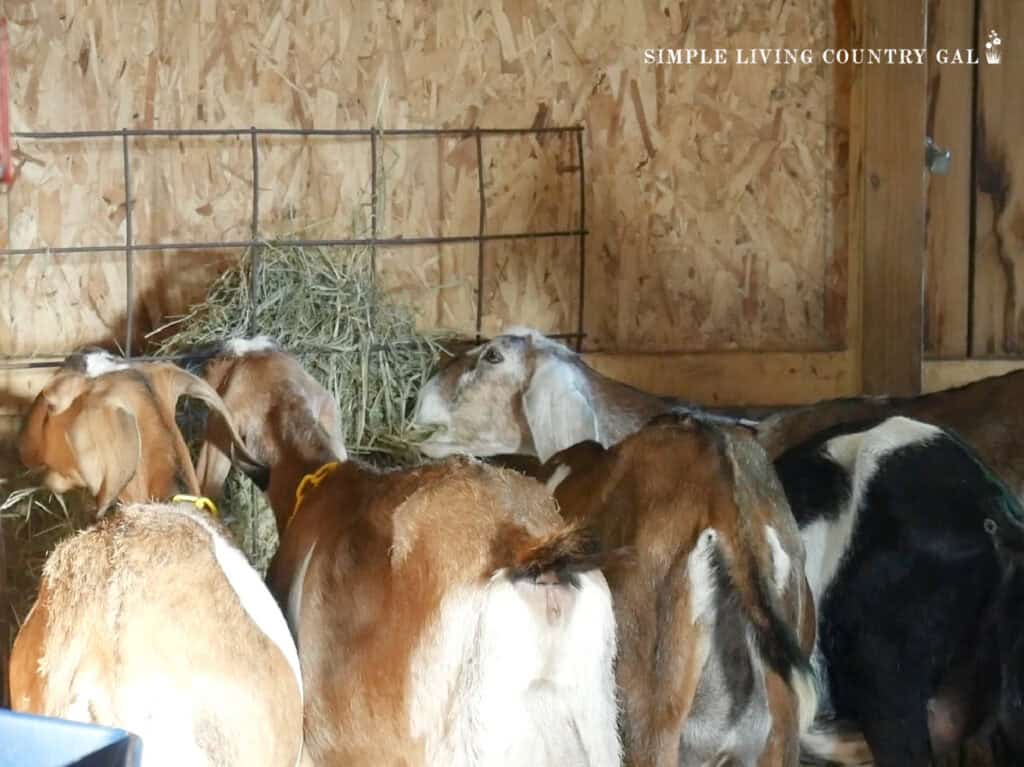
Pros: A durable fencing option that will hold up to the wear and tear of goats. Has little hay waste.
Cons: Be sure you have openings that will allow your goat to put her head inside without getting stuck. We find cattle panels work best for this setup. It is not a good option if your goats have horns, as they can get caught in the openings.
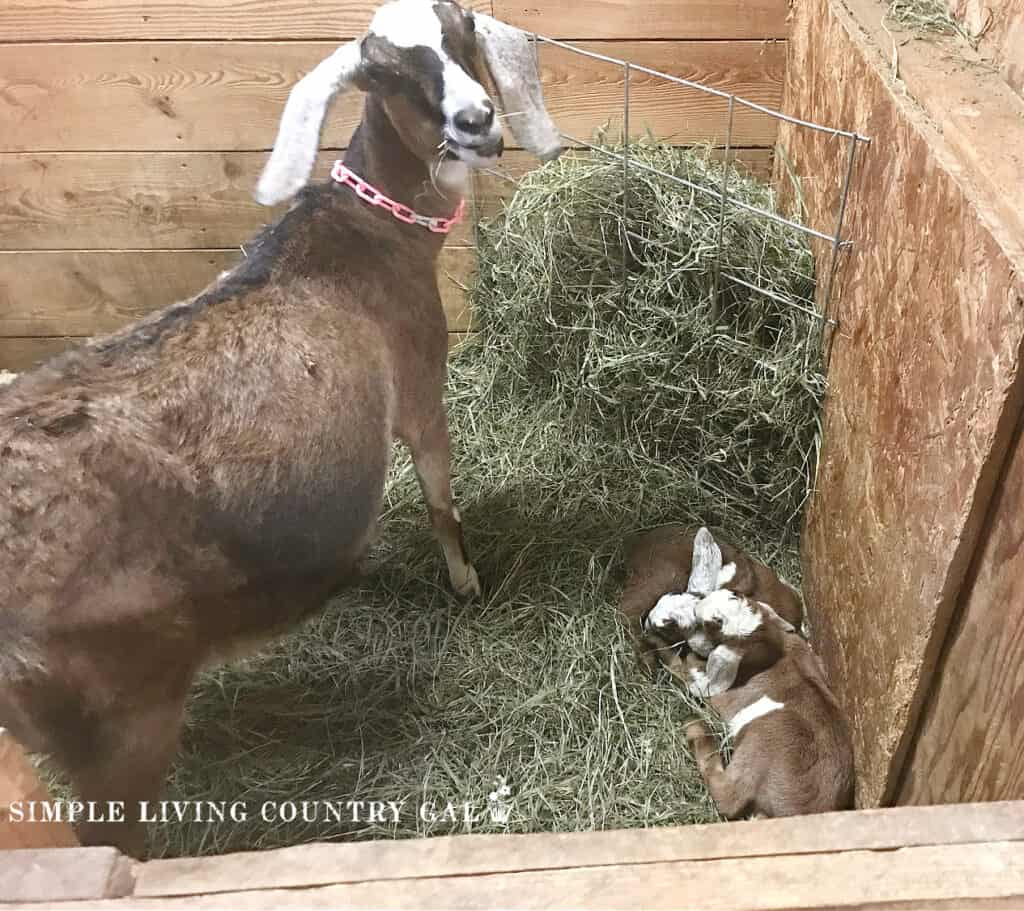
#3. Bag hay Feeder
The bag hay feeder is another option for those with limited space. This feeder can be hung on a wall in a barn or pen and filled with hay. Openings in the front allow easy access to the hay.
You can purchase a bag feeder or make one yourself.
Qicfrk 2 Pcs Hay Feeder for Goat, Nylon Goat Feeder, Slow Feed Hay Bag Less Hay Waste Tote Bag with Metal Ring and Adjustable Strap for Sheep Horses Paddock (Black)

Bag Hay Feeder Instructions:
- Using a heavy-duty material such as canvas, construct a bag that is long and slender.
- Cut a hole in the front and reinforce the opening to deter it from fraying or tearing.
- Use metal rings at the top for hanging from the wall.
- Add a second ring at the bottom to keep it from twisting.
A bag hay feeder is best for single goats or for a goat in a milk stand. If you are not a fan of sewing you can find these bags online for an affordable price.
Pros: I love this feeder; it is durable, works great, deters waste, and fits in tight areas.
Cons: A bit more advanced to make; I prefer to purchase ours instead. Also, not good with large herds.
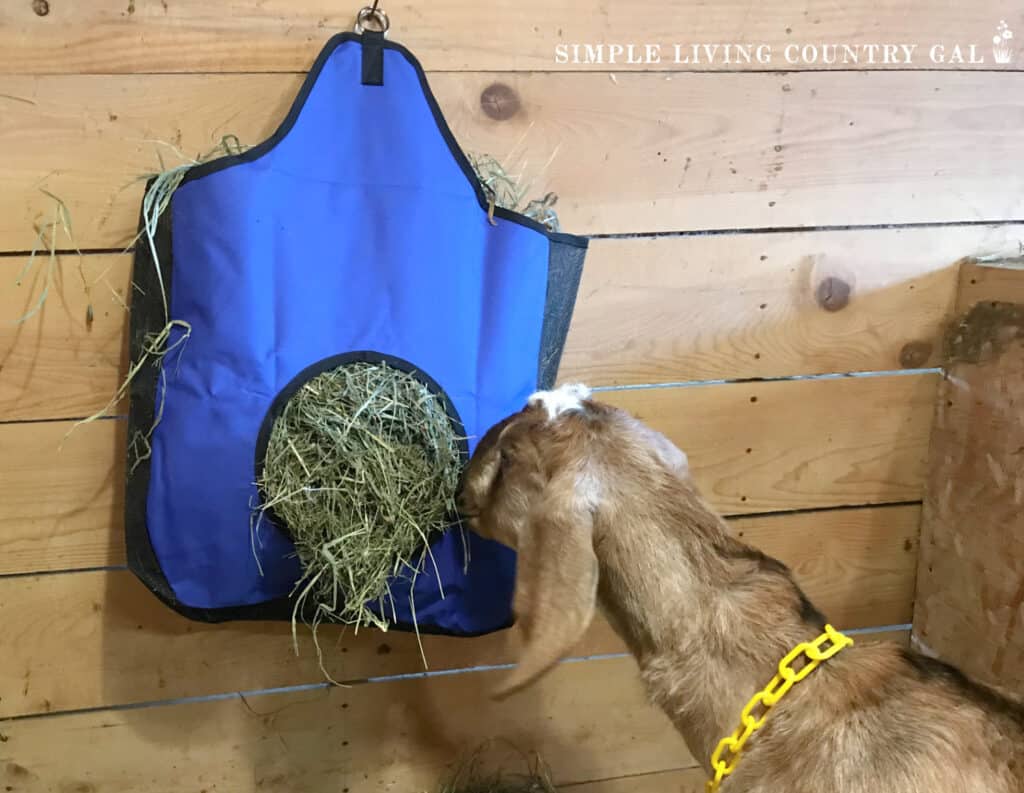
#4. Troth Pallet Feeder
Another type of hay feeder is the troth setup is made using a wood pallet. This is another affordable option that can be made in just a few minutes.
Troth Feeder Instructions:
- Remove the back of a wood pallet.
- Attach to the wall using spacers on the sides to give more room.
- Fill with hay.
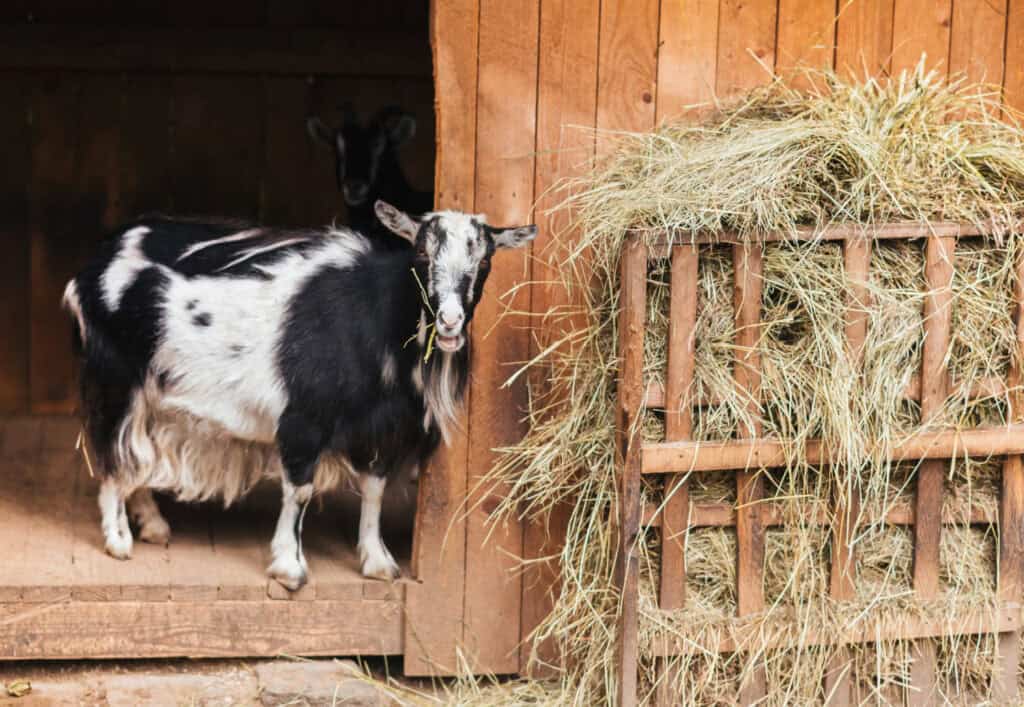
A troth pallet feeder is a quick affordable solution for a small herd of goats.
Pros: Has a low cost investment and can be made in just a few minutes.
Cons: Works best with a small number of goats as it will not hold large amounts of hay.
Read: Best Hay for Goats in Winter
#5. Open Feeder
This style of feeder is another one of our favorites because it is easy to make and will hold up for many years. We use it as our main hay feeder in our communal area. It holds a large amount of hay, making it an excellent option for larger herds. This setup produces the least hay waste, as any dropped pieces fall back into the troth to be eaten later.
Open Feeder Instructions:
- You will need one full sheet of metal hog panel fencing. Do not use cattle panels as they are too high.
- Lie it flat on the ground and measure it into four sections so it will form the shape of a rectangle.
- With the help of at least one more person, bend at each of the three sections.
- Using heavy-duty zip ties, attach the open ends together, making a rectangle.
- Place in a central area of your barn so all goats can access the hay.
An open feeder works best in communal areas where you have a group of goats to feed.
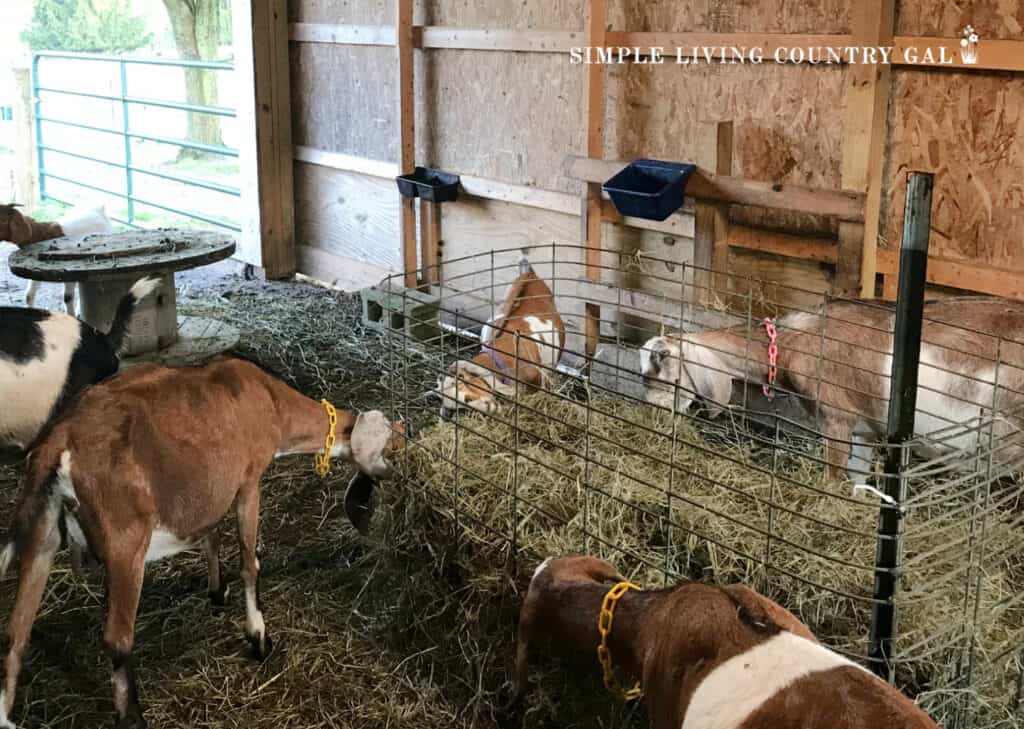
Pros: A great way to feed a large group of goats with little to no hay waste. It works great for all ages of goats, with openings that span the entire setup.
Cons: It is hard to make on your own, and it can be tricky getting the bends in the heavy fencing. It is not a good option if your goats have horns, as they can get caught in the openings.
#5. Bucket Feeder
Finally, there’s the bucket hay feeder, which is great for areas where hanging a feeder is not an option.
Bucket Feeder Instructions:
- Find a bucket that is clean and dry.
- Put it on a platform and weigh it down.
- Fill with hay.
Best for areas that do not have walls for hanging a feeder option. A great solution that is quick and easy to setup.
Pros: Easy, fast, and cheap.
Cons: Easily tipped over. If using outside, hay can get damp quickly.
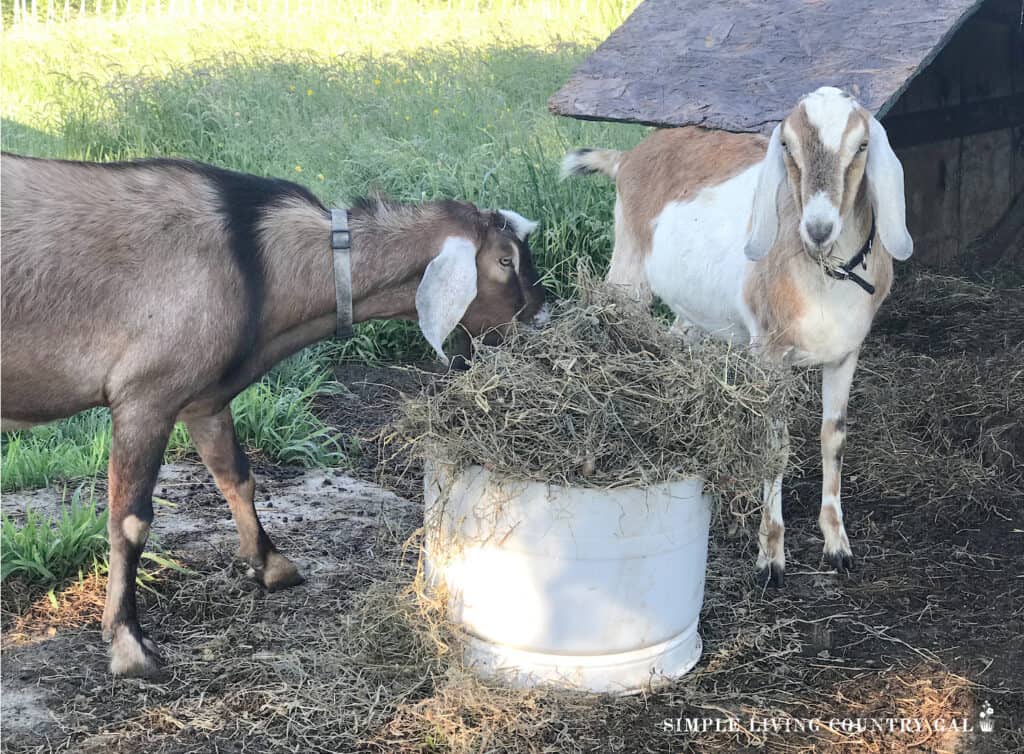
Hay feeders are an essential part of raising healthy and happy goats. By creating one yourself, you can save time and money, while also ensuring that your goats have access to fresh hay that’s clean and safe.
Whether you opt for a tote hay feeder, a rack hay feeder, a bag hay feeder, a troth hay feeder, or a bucket hay feeder, you’ll be helping to keep your goats healthy and happy for years to come.




